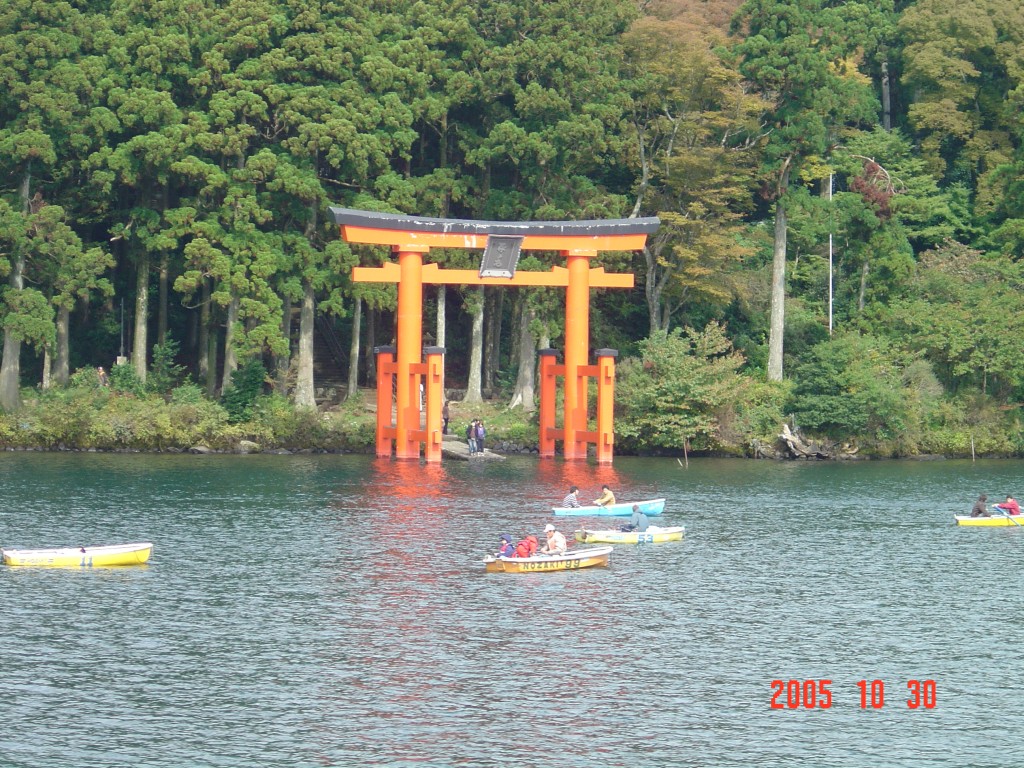
The torii on Lake Ashi
Hakone Shrine is often photographed because of its picturesque torii in Lake Ashi. It stands in the midst of a pleasant resort area with views of Mt Fuji (on a clear day), and I was lucky enough to be there for its main festival (Aug. 2). It consists of an opening ritual and procession that leads from the shrine through Hakone machi, where the whole affair embarks by boat for a brief trip around the lake to Konagata Shrine (formerly a massha). Here a closing ritual is held that mirrors the opening one at Hakone Shrine. It’s a pleasant and orthodox affair, with participants far outweighing spectators (tourists are way down this year because of the Tohoku disaster).
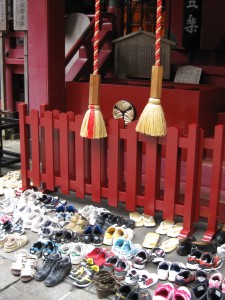
The haiden where it all begins
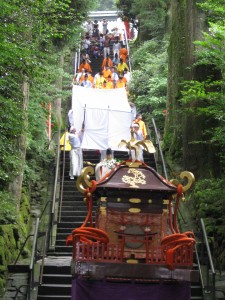
Bringing the spirit-body down the steps
There were several points which struck me. Of particular interest was the use of an on-sashiha to shroud the goshintai as it was carried from the shrine to be put into the mikoshi. I’d never seen this before at a festival, and it’s the way the sacred mirror at Ise is transferred every twenty years. The white sheet protects the sacred ‘spirit-body’ from view (which by tradition only the head priest is supposed to see).
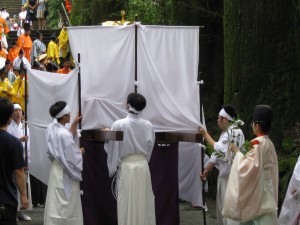
The on-sashiha that conceals the sacred spirit-body
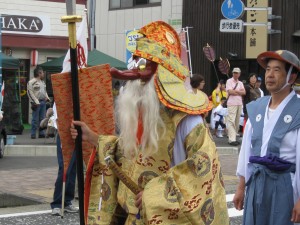
Sarutahiko, the deity who guides the way
Sarutahiko took a guiding role at the front of the procession, presumably because the main kami of Hakone Shrine is Ninigi no mikoto, Amaterasu’s grandson. When the latter descended to earth, he was shown the way by the redfaced longnosed ‘earthly kami’. My reading of this myth is that the invading ‘wajin’ or yamato people formed an alliance of sorts with the native Jomon or Ainu people. (Sarutahiko literally means ‘monkey rice-field prince’, and myths around the world are full of insults such as ‘monkey face’ for indigenous people by conquering newcomers.)
The mikoshi was another intriguing item, with a circular mirror hanging on each side and birds at its four corners. It spoke to me of the shamanistic origins of Shinto, with the bird representing the flight of the shaman and the mirrors the means of repelling evil spirits.
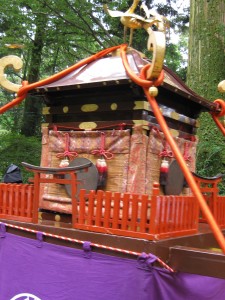
Mikoshi with mirrors and birds
Acting as M.C. for the event was a young priestess, who, unusually for such events, was cuter than the miko. The priestess, who holds the rank of ‘gon-negi’ and is third in the shrine seniority, announced each step of the ritual with perfect poise and posture throughout. There was a grace and dignity to her performance that made it a virtual work of art. The event finished with a kagura dance by the miko, which was carried out in fine fashion, but it was the young priestess who stole the show.
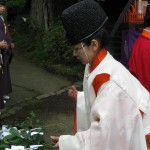
Priestess selects the tamagushi
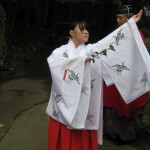
Miko dancing kagura
For me, the highlight of the whole event was the passage across the lake by boat. While the mikoshi went off in a small boat, the rest of the procession embarked on a replica of Nelson’s Victory. Say what? No one appeared to have the least concern about the incongruity, and I guess it’s a glorious example of the Japanese ability to integrate foreign elements and make them culturally their own. And so off across the lake sailed Sarutahiko et al on the flagship of Britain’s greatest admiral, the myth of one island country joined bizarrely with the legendary hero of another.
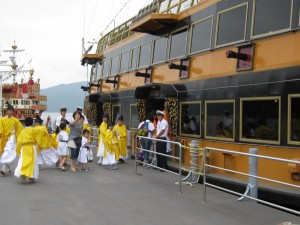
Procession boarding the Victory
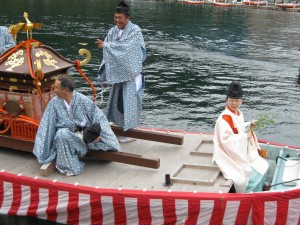
The mikoshi boat
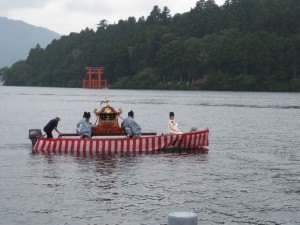
There goes the mikoshi past the torii

And there goes the Victory!

A number of years ago, when my parents-in-law (is that the word?) were still alive, Kaz and I went with them to walk in the Hakone Jinja Festival Eve torchlit round… through the fields, with patcher-insects singing from the grasses beside the way. It was magical! I wasn’t sure who the god was, but felt blessed; especially as Kaz and I won the third prize in the Hakone citizens’ (we qualified by being with local friends) lottery – a nice collapsible red deck chair, which I had to carry back to Kyoto. Come and sit in it this autumn on our roof here in Saga!